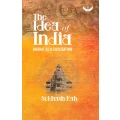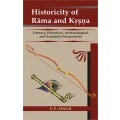Shop by Category

Power of the Female: Devangana Sculptures on Hindu Temple Architecture
Sold By:
DK Printworld
₹4,800.00
Short Description
Sculptures of numerous engaging devanganas — the surasundari, apsaras and alasakanya figures — decorate walls, ceilings and doorways of classical structures in India. The book offers dynamic meanings of these figures in religious and cultural consciousness of India and how they symbolize and illustrate “the power of the female” in Indian traditions.More Information
| ISBN 13 | 9788124606872 |
| Book Language | English |
| Binding | Hardcover |
| Total Pages | 474 |
| Edition | 1st |
| Release Year | 2014 |
| Publisher | D.K. Printworld Pvt. Ltd. |
| Author | Gauri Parimoo Krishnan |
| GAIN | 4OJQUHMAZ1I |
| Category | Arts History & Archaeology Women Studies Ever Green Shelf Life |
| Weight | 2,500.00 g |
| Dimension | 14.00 x 22.00 x 1.80 |
Frequently Bought Together

This Item: Power of the Female: Devangana Sculptures on Hindu...
₹4,800.00
Sold by: DK Printworld
Choose items to buy together
ADD TO CART



This Item: Power of the Female: Devangana Sculptures on Hindu Temple Architecture
Sold By: DK Printworld
₹4,800.00
Historicity of Rama and Krsna: Literary, Historical, Archaeological and Scientific Perspectives
Sold By: DK Printworld
₹150.00
Total Price : ₹4,800.00
Product Details
This book is an offering to New Art History taking the study of Indian classical sculptural art and traditional Indian iconography to newer heights of interpretation. Sculptures of female figures in classical Indian architectural traditions have enjoyed a special placement and significance. Numerous engaging images of devanganas — the surasundari, apsaras and alasakanya figures — decorate walls, ceilings and doorways of Hindu temples in India. Viewing the devangana sculptures as a continuation of the yaksi sculptures of Buddhist and Jaina monuments and the concept of primordial mother goddesses of the Vedic times, this challenging work on the devangana sculptures studies the morphology, iconology and semiotic meanings of the devangana figures and their placement in monuments of Gujarat, Rajasthan and Madhya Pradesh between the eighth and twelfth centuries ce.
In a path-breaking effort, the work focuses not on the much-discussed erotic and sexual connotations but explores their dynamic meanings in the religious and cultural consciousness which help to symbolise ßthe power of the femaleû in representational artistic traditions of India. For this, copious architectural and religious texts are examined. With more than 250 illustrations of temple sites and detailed sculptures, this book enquires into the imagery of these figures. A significant aspect of the research is its critiquing of the existing literature on the subject to come up with novel viewpoints and use of tools like dhvani theory, psychoanalysis and feminism to interpret the devangana sculptures.
The book will benefit young researchers, cultural enthusiasts and erudite scholars of Indian art and architecture focused on religious and cultural significance of India’s sculptural heritage.














